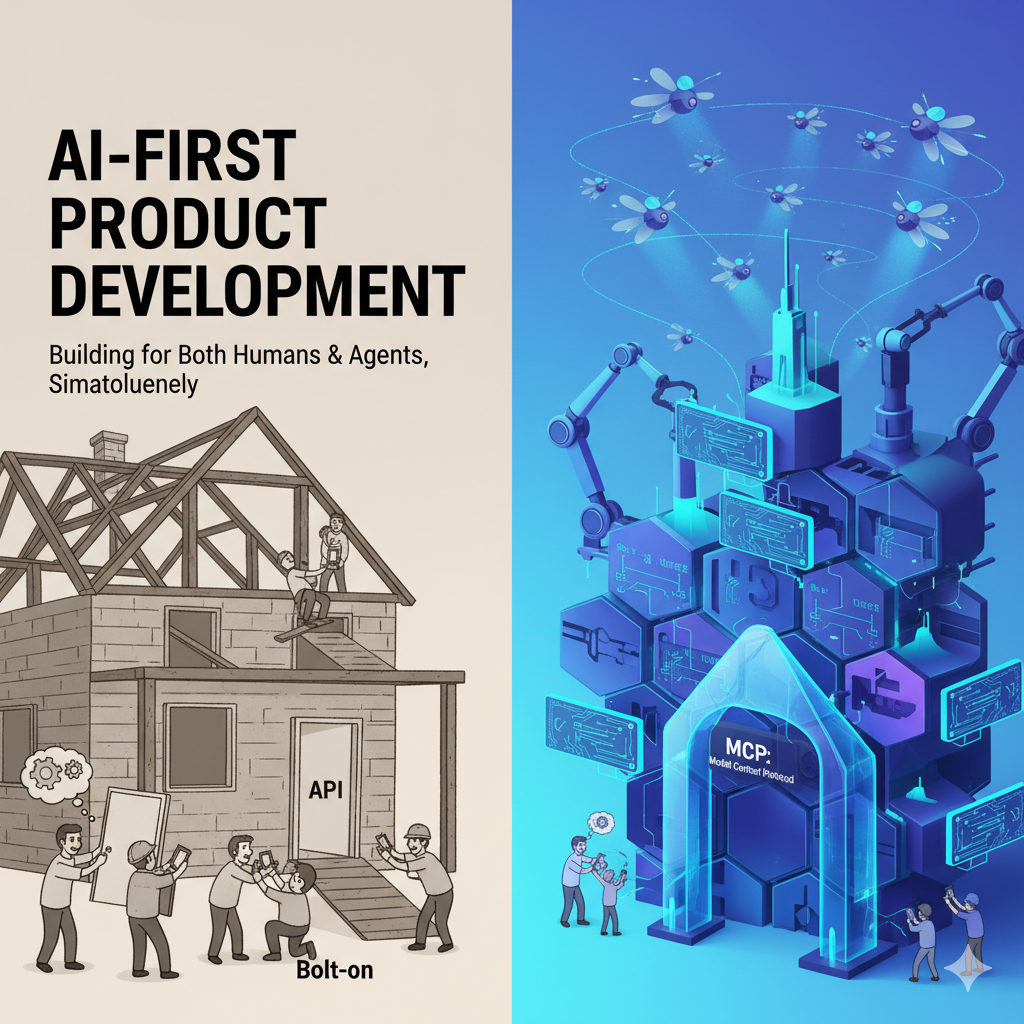
AI agents are here, and they’re not just a passing trend. While we speculate on the next great leap in artificial intelligence, a powerful reality has taken hold: Large Language Models (LLMs) equipped with agentic frameworks are proving incredibly adept at using tools to execute complex, task-based activities.
This new paradigm, however, has caught many of us on the back foot. We’re in a phase that feels a lot like the early days of the web API boom. Back then, we had powerful systems and functionalities, but we had to retrospectively build the APIs that would allow other applications to connect with them. Today, we’re doing the same thing, but for AI.
The Problem with the “Bolt-On” Approach
Right now, the burden of tool creation falls on dedicated AI development teams. They look at a finished product or an existing suite of features and get to work building wrappers around web APIs, effectively translating human-centric interfaces into something an agent can understand and use. This is a necessary step to unlock immediate value, but it’s fundamentally inefficient and reactive. We’re building the front door after the house is finished.
This retrospective tool-building is a bottleneck. It separates the core product evolution from its potential in the AI ecosystem. Features are launched, and only later—as an afterthought—do we ask, “How can an AI use this?”
A New Paradigm: AI-First Product Development
It’s time to flip the script. We need to move from an AI-afterthought to an AI-first product development approach.
AI-first product development means that building for AI agents is no longer a separate, subsequent task. It becomes an integral part of the feature development lifecycle.
Imagine your product team is building a new “schedule a report” feature. In a traditional workflow, they’d build the user interface and the backend logic. The work would be considered done. In an AI-first approach, they would do that and, in parallel, build a corresponding, robust tool that an AI agent can use, such as schedule_report(report_type, recipient, frequency).
This isn’t about abandoning APIs or replacing the UI layer. We still need traditional APIs for system-to-system integrations, and the graphical user interface remains the primary way humans will interact with the product. The AI-first approach is about augmenting, not replacing. It’s about creating a parallel, equally important layer of tools specifically designed for agentic consumption. We must build for both humans and agents, simultaneously.
MCP: The Standard for a New Era
This is where the Model Context Protocol (MCP) becomes critical. MCP offers a standardised structure for these tools, making them easily discoverable, understandable, and usable by different agents and models. Building a strong foundational layer of tools using a standard like MCP is the key to unlocking the next level of AI-powered innovation.
By embedding tool creation into the core product development process, we create a rich, native “agent-surface” for every product.
The Dawn of the Agentic Ecosystem
When product teams natively build tools for their features, the entire dynamic changes. We move from a world where AI is retrofitted onto our digital infrastructure to one where AI agents are first-class citizens.
This approach will cultivate a thriving ecosystem where a top layer of sophisticated, specialised AI agents can consume this vast library of pre-built, reliable tools. Imagine an agent that can seamlessly orchestrate tasks across dozens of products without a single custom wrapper, all because those products were built with an AI-first mindset. It could plan a marketing campaign, book the travel, generate the sales report, and onboard the new client, all by leveraging the native tools each product provides.
The future of product is not just about what users can do with their fingers and keyboards; it’s about what agents can do on their behalf. The question for every product leader, designer, and engineer today is no longer just “What feature should we build next?” but “What feature and tool should we build next?”
Leave a Reply